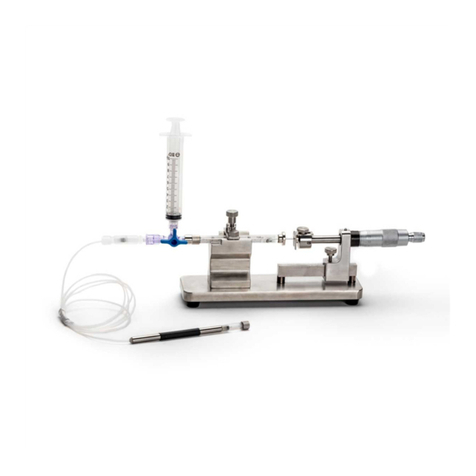
PV830 Pneumatic PicoPump
World Precision Instruments iii
Copyright © 2012 by World Precision Instruments, Inc. All rights reserved. No part of this publication
may be reproduced or translated into any language, in any form, without prior written permission of
World Precision Instruments, Inc.
CONTENTS
ABOUT THIS MANUAL ..................................................................................................................... 1
INTRODUCTION.................................................................................................................................. 1
General ............................................................................................................................................. 1
Notes and Warnings .................................................................................................................... 1
Unpacking ....................................................................................................................................... 2
INSTRUMENT DESCRIPTION.......................................................................................................... 3
Setup.................................................................................................................................................. 5
Vacuum Input................................................................................................................................. 6
Pressure Input................................................................................................................................. 6
Eject Pressure Port (front panel)............................................................................................... 6
Vacuum Port ................................................................................................................................... 8
OPERATING INSTRUCTIONS........................................................................................................... 9
Front Panel ...................................................................................................................................... 9
Rear Panel .....................................................................................................................................10
Techniques In Microinjection ..................................................................................................10
Setting the Hold Pressure ...................................................................................................11
Micropipette Manufacture..................................................................................................12
Volume Calibration...............................................................................................................12
Multibarrel Microinjection..................................................................................................14
MAINTENANCE..................................................................................................................................14
Cleaning .........................................................................................................................................14
ACCESSORIES.....................................................................................................................................14
Replacement Parts......................................................................................................................15
TROUBLESHOOTING.......................................................................................................................15
SPECIFICATIONS................................................................................................................................16
Pressure..........................................................................................................................................16
Vacuum...........................................................................................................................................16
Timing.............................................................................................................................................16
Physical Specifications...............................................................................................................16
BIBLIOGRAPHY .................................................................................................................................17
DECLARATION OF CONFORMITY...............................................................................................18
WARRANTY ........................................................................................................................................19
Claims and Returns ....................................................................................................................19
Repairs ............................................................................................................................................19





























